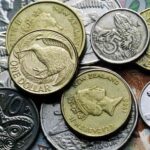The loonie, as the Canadian dollar is best known, trimmed daily losses to trade little changed against the US dollar after data showed the Canadian raw materials price index (RMPI), surged by the most in almost three years in February, adding to evidence the recovery is picking up steam.
USD/CAD hit a session high at 1.1070 at 08:15 GMT, after which the pair trimmed daily losses to trade little changed at 1.1044 at 13:34 gmt, losing 0.05% for the day. Support was likely to be found at March 31st low, 1.1003, while resistance was to be encountered at March 28th high, 1.1078.
Loonies demand was heightened after the raw materials price index surged by 5.7% in February, the most in three years, after an upward revised 2.8% gain in the previous month and sharply exceeding analysts estimates of a 2.3% advance in February. On year-over-year basis, the RMPI rose at an annualized 3.9% rate in February, confounding experts forecasts for a 1% drop and after gaining 0.1% in the prior month.
The industrial product price index also advanced by 1% in February, exceeding analysts projections of a 0.7% gain and after adding 1.4% in January. On year-over-year basis, the IPPI surged by an annualized 1.8% rate in February, after rising 2.3% in the prior month.
The Canadian GDP grew 0.5% to an annualized 1.61 trillion Canadian dollars (approximately $1.46 trillion), offsetting a 0.5% drop in the previous month and beating analysts’ estimates for a 0.4% gain, a report by Statistics Canada showed yesterday.
The data suggested that the world’s 11th largest economy may be gaining momentum after the harsh winter that Bank of Canada Governor Stephen Poloz said was harming output.
Manufacturing output surged by 2% in January, led by gains in goods meant to last at least three years, following a 1.9% decline in the previous month, today’s report by Statistics Canada showed. Production of all goods-producing companies increased by 1 percent with expansion in mining, oil and gas extraction and construction.
The BoC Governor Stephen Poloz commented on March 18th that first-quarter growth may be “softer” than the central bank forecast in January because of inclement weather and other factors he didn’t elaborate on.
Meanwhile, greenback’s demand was pressured after Federal Reserve Chair Janet Yellen said yesterday at a conference in Chicago that the central bank needed to do more to fight against unemployment, because keeping interest rates near zero for more than five years and swelling its balance sheet with asset purchases seemed not to be enough. She also added that the US economy still needed monetary stimulus for “some time” and that most of the Fed officials shared the same opinion.
“After Janet Yellen’s comments, the dollar came off its highs, particularly against the commodity currencies,” said Callum Henderson, the Singapore-based global head of foreign-exchange research at Standard Chartered Plc., cited by Bloomberg. “In the wake of a fall in cross-asset volatility with China’s PMI data also helping sentiment, you’ve seen renewed focus on carry. The higher yielding currencies in G-10 and emerging markets are doing better.” Australia’s dollar is one of the G-10 currencies.
Market players deemed Yellen’s comments as rather dovish, as she signaled the central bank will press on with trimming stimulus, but at the same time, the Fed will not be in a hurry to raise borrowing costs.
Elsewhere, EUR/GBP hit a session high at 0.8291 at 08:45 GMT, after which consolidation followed at 0.8282, adding 0.22% for the day. Support was likely to be received at March 31st low, 0.8252, while resistance was to be met at March 31st high, 0.8298.





